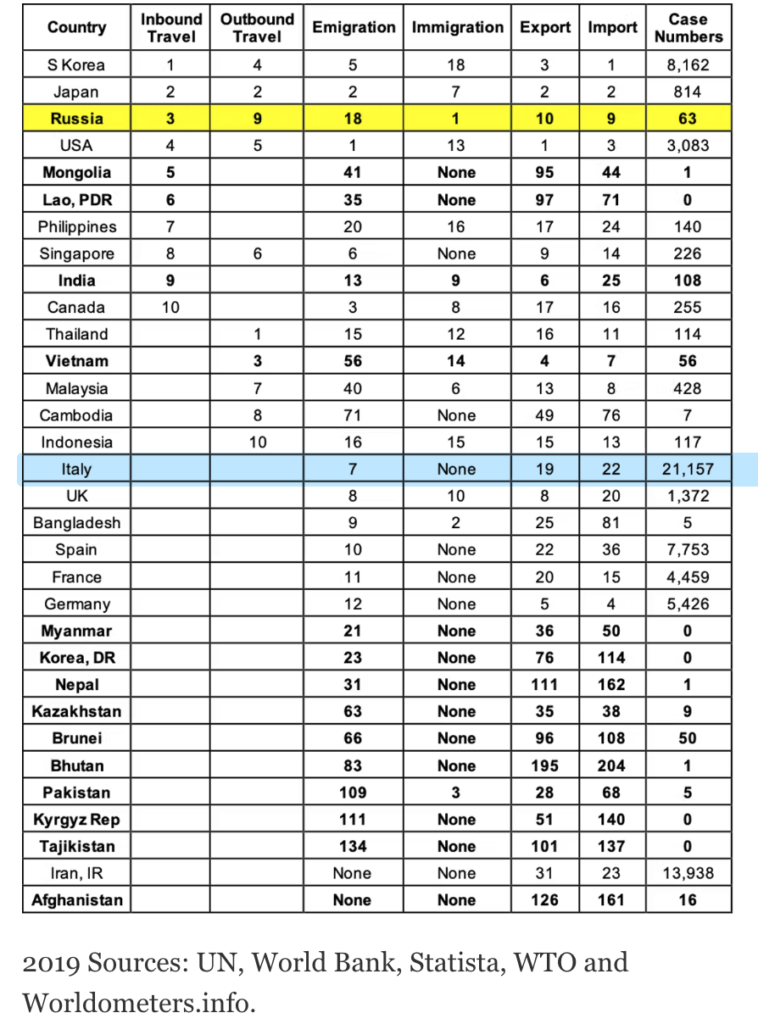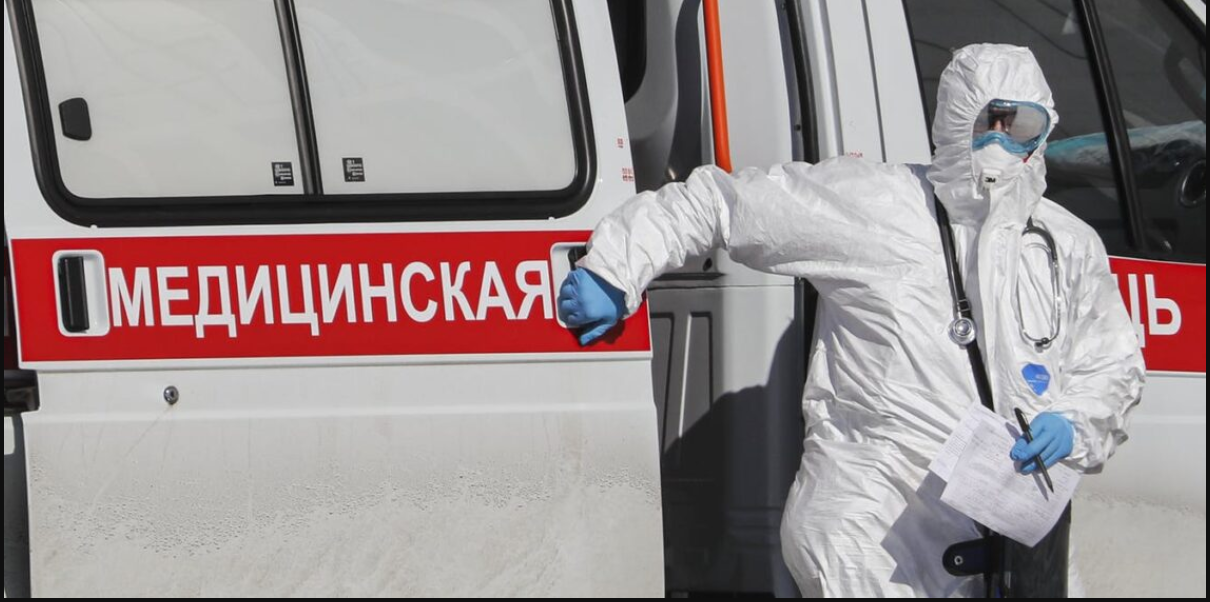Since the COVID-19 pandemic began in Wuhan, China in December 2019, we have seen the virus spread to over 160 countries. Several countries have experienced large outbreaks, including China, South Korea, Italy, Iran, Spain and France, with the US and UK seeing rapidly increasing numbers. But most countries in the world have reported very few to no cases of COVID-19.
While it is likely that the virus has not yet reached and started localised transmission in every country, many of these countries have strong travel, migration or trade relationships with China. This raises the question: are these low case numbers due to the virus not reaching or establishing infections, is it due to effective border control, or does it reflect a lack of screening and reporting?
The spread of an infectious disease from its country of origin is a complicated process involving many factors, but at its core, it is related to the movement of people. There are several parameters that can be used to coarsely estimate movement: travel (inbound and outbound), migration, trade and proximity. Looking at the number of COVID-19 cases in the context of the ranked order of flow of people and goods between China other countries, we see the following (as of March 15):

While this is a vastly simplified analysis of population movement, it is striking that there are only 63 cases reported in all of Russia. Given that Russia has very strong travel, emigration, immigration and trade relationships with China, its very low case numbers raise questions, especially as other countries with comparably close relationships (Japan, South Korea and the US) are experiencing significant local transmission.
Also, it is interesting that in the 15 countries that share land or sea borders with China (shown in bold), only 310 cases have been reported. Only India has reported more than 100 cases (108) and ten countries have reported between zero and five cases. Given that many of these countries have significant trade and travel relationships with China the low level of cases is surprising.
Few cases throughout Africa
Aside from Russia, there are other regions of the world that have not reported any (or many) cases of COVID-19. Of particular note is that in Africa only Egypt has reported over 100 cases (126) with most countries reporting between zero to five cases.
For the 54 countries in Africa, there have only been 253 cases out of the 167,519 cases worldwide. There are several possible reasons for the low number of cases in many of these countries.
We are still in the early stages of the COVID-19 pandemic, so it is not surprising that some countries have not had any cases and are not yet experiencing local transmission of the virus. But understanding the reason why these sometimes well-connected countries have few reported cases is important for the global effort to contain the spread of the pandemic. There is a range of explanations for low case numbers, including weak travel connections, effective border screening and travel restrictions, local climate effects, a lack of screening or a lack of reporting.
When considering travel, many countries in question have very low levels of travel exchange with China. This is amplified by the travel restrictions implemented by China during the early stages of their outbreak that may have delayed the arrival of COVID-19 to many countries throughout Africa. In this scenario, case numbers will probably increase significantly over the coming two weeks due to the extensive ongoing transmission in many European countries with robust travel links to Africa.
Some countries with very good travel, migration and trade links with China still have comparable low case numbers (both Japan and Singapore have fewer than 1,000 cases). For these countries, there has been early and extensive border screening, control and surveillance, which has probably held the localised transmission in check. If these measures hold, these countries will probably see only slow increases in case numbers over the coming weeks.
It is interesting to see that most of the global cases are found north of the tropic of cancer. At present, there are only 2,025 cases south of the tropic of cancer. Case numbers in countries residing in the tropics or current southern hemisphere winter make up just 1.29% of the global cases. This could reflect global travel and trade relationships with China or could reflect impacts of climate on COVID-19 transmission.
It is also possible that the broad range of tropical infectious diseases has masked the identification of COVID-19 cases that often present with mild, non-specific symptoms.
If travel connections with China have been the limiting factor then cases are likely to rise over the next two weeks, as discussed above for Africa. If climate is affecting virus transmission then cases might remain low until cooler weather in the southern hemisphere, and if other diseases are masking COVID-19 cases, then the reported cases will probably remain low in these countries, though the actual cases would increase.
Finally, the low levels of reported cases in many countries may be due to a lack of testing or a lack of reporting. Many countries are actively pursuing policies in which only those with serious illness and a travel history to an area with strong local transmission will be tested, including the UK. This will lead to a dramatic under-reporting of case numbers and can jeopardise the ability to contain the pandemic, as the WHO has stated: “You can’t fight a virus if you don’t know where it is. Find, isolate, test and treat every case, to break the chains of transmission.”
Other countries may simply not have the infrastructure and resources to afford large-scale testing, limiting their ability to control the disease within the country and potentially creating hot spots where the virus can continually spread from. It is also possible that some countries are not reporting any or many of their cases to preserve their reputation or to prevent economic hardships that may be associated with containment measures, such as travel restrictions.
Dangerous game
It is of particular concern that with the close relationships to China and extensive national resources, Russia has only reported 63 cases. While it is possible that this low number reflects their active border control and screening there is a concern that this reflects either a lack of screening or a lack of reporting. Combined with the recent evidence that Russia has been behind several recent COVID-19 disinformation campaigns, this raises the concern that Russia may be playing a dangerous game with global health. Hopefully this is simply a case of good border control or low rates of testing, but time will tell.
This is a dynamically unfolding pandemic that will require the concerted efforts of counties around the world to control. As the WHO director-general Tedros Adhanom Ghebreyesus says: “we’re all in this together”.![]()
Jeremy Rossman, Honorary Senior Lecturer in Virology and President of Research-Aid Networks, University of Kent. This article is republished from The Conversation under a Creative Commons license. Read the original article.


